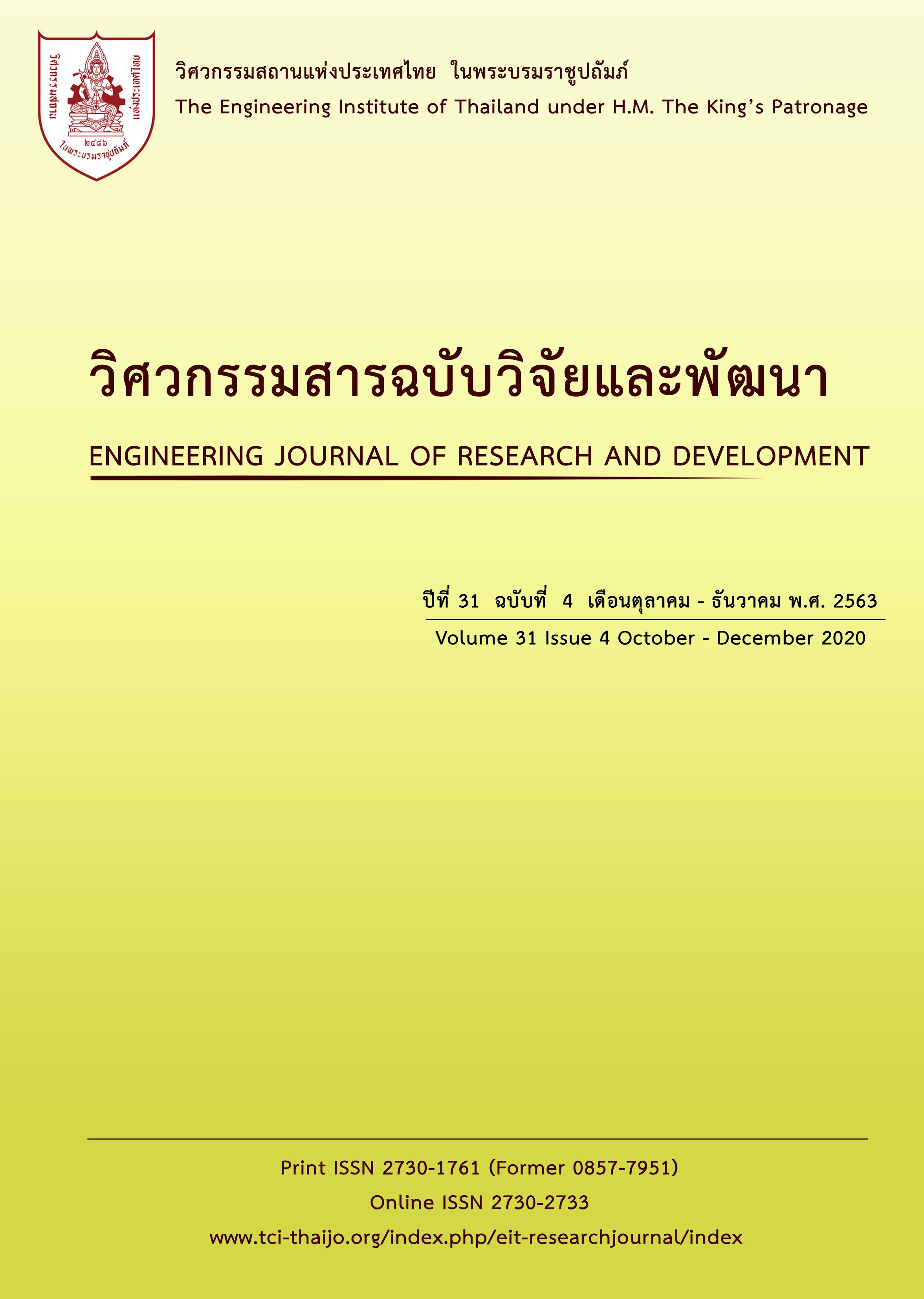การจัดสรรน้ำชลประทานโดยวิธีเชิงพันธุกรรมด้วย ASP และ Javascript (พื้นที่ศึกษา พื้นที่ระหว่างแม่น้ำเจ้าพระยาและ แม่น้ำท่าจีน)
Main Article Content
บทคัดย่อ
จากการพัฒนาแบบจำลอง GAWA - 2019 ขึ้นมาใหม่โดยใช้โปรแกรม Java Script ร่วมกับ ASP พื้นที่ที่ศึกษาลุ่มน้ำเจ้าพระยา ระหว่างแม่น้ำเจ้าพระยาและแม่น้ำท่าจีนรวมทั้งหมด 131 nodes เส้นทางเดินของน้ำ 175 เส้นทาง จำนวนชุดทางเลือก 100 ชุด ค่า Probability of Crossover (Pc) เท่ากับ 0.080 ค่า Probability of Mutation (Pm) เท่ากับ 0.00787 โดยเลือกใช้ Modified Mutation มีค่า Number of Mutation per Chromosome เท่ากับ 0.015 และค่าสัมประสิทธิ์ปรับแก้สมดุลน้ำ R1, R2 และ R3 เท่ากับ 1, 1และ 4 ตามลำดับ ซึ่งมีปริมาณน้ำที่ส่งเข้าระบบทั้งหมด 692.600 m3/s และ ปริมาณน้ำที่ส่งเข้าระบบที่คำนวณด้วยโปรแกรม GAWA - 2019 เท่ากับ 692.591 m3/s ผลการวิเคราะห์สามารถแก้ปัญหาได้ตามวัตถุประสงค์ที่ต้องการเพื่อให้การใช้น้ำในระบบชลประทานเป็นไปอย่างเต็มประสิทธิภาพ เกิดประโยชน์สูงสุด และช่วยในการจัดสรรน้ำให้เกิดความเท่าเทียมกัน
Article Details
บทความที่ได้รับการตีพิมพ์เป็นลิขสิทธิ์ของวารสารวิศวกรรมสารฉบับวิจัยและพัฒนา วิศวกรรมสถานแห่งประเทศไทย ในพระบรมราชูปถัมภ์
เอกสารอ้างอิง
[2] Levine G. Relative water supply: An explanatory variable for irrigation systems. Technical Report No. 6; The Determinants of Irrigation Project Problems in
Developing Countries. Ithaca, NY: Cornell University., 1982.
[3] Wardlaw R.B. and Barnes J. Optimal allocation of irrigation water supplies in real time. J. of Irr. and Drainage Eng. 1999, 125(6): 345-354.
[4] Bhaktikul K., The development of a Genetic Algorithm for Real Time Water Allocation and Water Scheduling in Complex Irrigation Systems. Ph.D. thesis School
of Civil and Environmental Engineering, The University of Edinburgh., 2001.
[5] Holland, J. H., Adaptation in natural and artificial systems: an introductory analysis with applications to biology, control, and artificial intelligence. U Michigan
Press., 1975.
[6] Goldberg, D.E., Genatic algorithms in search optimization & machine learning. Addison- Wesley, Reading. Mass. USA., 1989.
[7] Wardlaw R.B. and Bhaktikul K., Application of a genetic algorithm for water allocation in an irrigation system. Irrigation and Drainage; 2001, 50, pp. 159–170.


